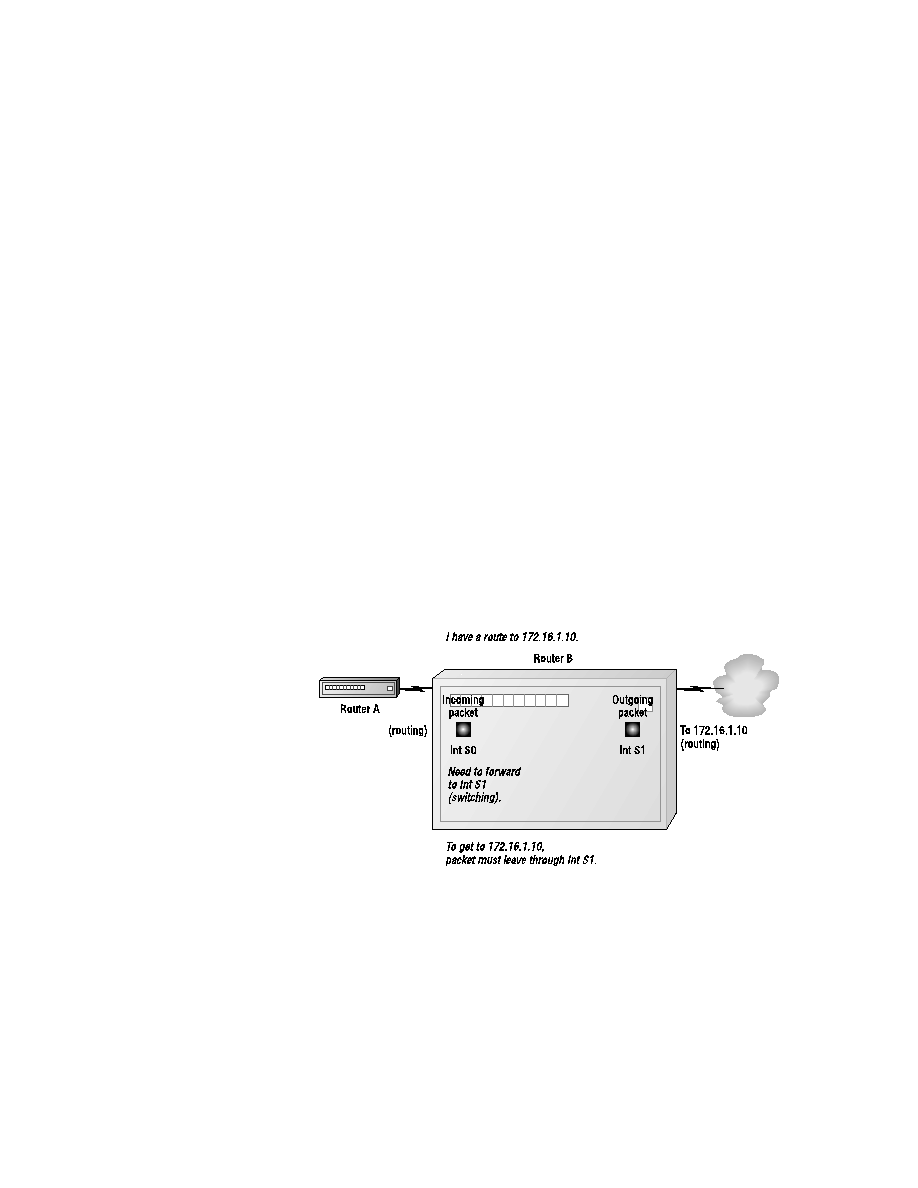
Understanding the Output from Diagnostic Commands
159
We begin by discussing the routing process that occurs on a router;
then we move on to switching paths that routers implement to facilitate
and accelerate packet forwarding. Don't confuse switching paths with
Layer 2 switching, which does not occur on a router. As we discuss
these processes and tools, we will also emphasize proper utilization to
avoid excessive intrusion while troubleshooting.
The Routing Process
Routers
are Layer 3 devices that are used to forward incoming packets to
their destination by using logical addressing. IP addresses are logical
addresses. Routers share information about these logical addresses with each
other, and this information is stored in route tables. The router uses the route
table to map the path through the router to the destination IP address.
Two
processes
must be present for routing to work properly. The first is
path determination
, which means that the router is aware of a route that
leads to the desired destination address. The second is the actual moving of
the packet from the inbound interface to the proper outbound interface.
Look at Figure 4.1 to get a visual idea of this process.
F I G U R E 4 . 1
Routing components
As you can see, a packet is forwarded to Router B via the routing pro-
cess. Router B told Router A that it knew a route to the destination
address. Once Router B has the packet, it must find the outgoing port
associated with the destination address of
172.16.1.10
. Once the route
has been found, the router must move the packet to the outgoing interface
Serial 1. After the packet reaches interface Serial 1, it is routed toward the
destination of
172.16.1.10
.
Copyright ©2000 SYBEX , Inc., Alameda, CA
www.sybex.com
